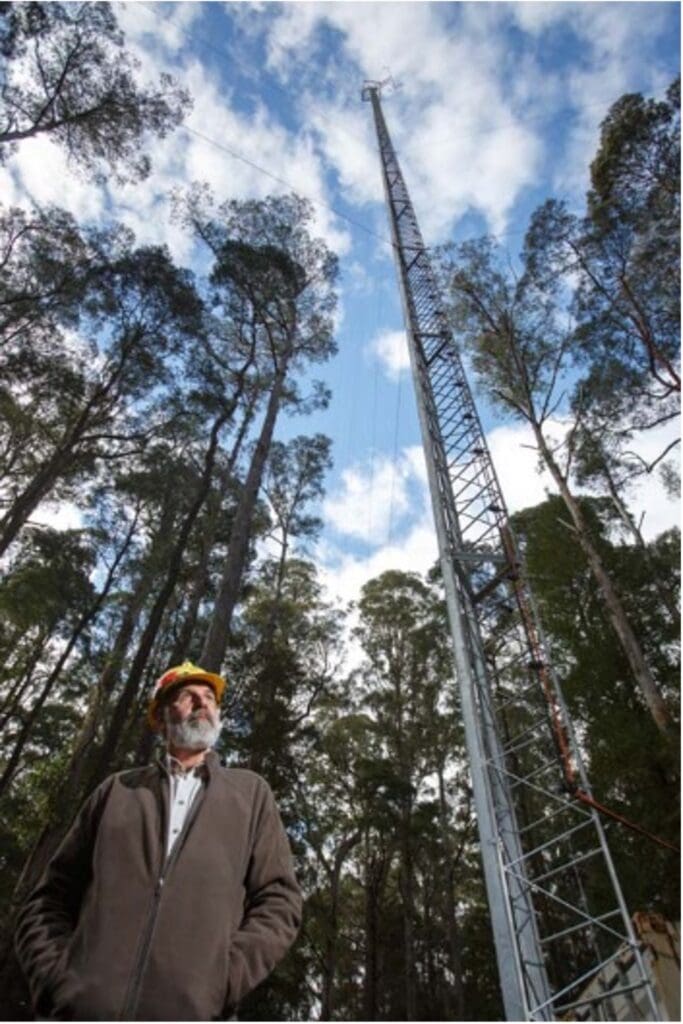Reporting on the vulnerability of Tasmania’s tall eucalypt forests under a warming climate, ‘Giants under Threat’, was released in March on the International Day of Forests. The report summarises recent studies that have found the tall eucalypt forest at Warra, within the Tasmanian Wilderness World Heritage Area, shows an unusually high sensitivity to temperature rise.
Dr Tim Wardlaw, University of Tasmania, has been analysing long-term data from TERN’s Warra Tall Eucalypt SuperSite, located in the Tasmania Wilderness World Heritage Area (TWWHA) in the Huon Valley of Tasmania, Australia.
The results, published in a report titled Giants Under Threat, found that the Eucalyptus species in the Warra forest are highly sensitive to temperature – as temperatures rise, the productivity of the forest declines strongly. The study suggests previous research methods for measuring forest health may have overestimated the resilience of the species of tall eucalypts to rising temperatures in terms of their ability to maintain productivity.

Dr Tim Wardlaw at the TERN Warra Tall Eucalypt SuperSite before the flux tower was felled in extreme winds in 2021, interrupting the long-term carbon flux data stream from the site
The TERN Warra Tall Eucalypt SuperSite is located in association with a Long Term Ecological Research (LTER) site that was established in 1998 to encourage long-term ecological research and monitoring in the wet eucalypt forests in Tasmania, Australia. The 159 square kilometre site lies between the Huon and Weld Rivers, approximately 60 km west-southwest of Hobart. Its altitudes range from 37 metres to 1260 metres and the site is known for its geological diversity.
The ‘Giants under Threat’ report has 16 recommendations for implementation to ensure the effective management of the eucalypt forests in Tasmania to adjust for the effects of global warming. Among these is a call for the risk that a hotter and drier climate will have direct adverse impacts on the health and productivity of Tasmania’s tall eucalypt forests to be included in the risk assessment being undertaken as part of Tasmania’s Climate Action Plan 2023-25. Also in the recommendations is the call for the forest productivity monitoring that is done at Warra to be extended to tall eucalypt forests elsewhere in Tasmania using a low-cost dendrometer network and satellite remote sensing.
The report was a collaboration between Climate Futures, University of Tasmania and NCRIS-enabled TERN.







